Adding to the overall gory of the Russia-Ukraine war, the world’s largest operational aircraft- Ukraine-made Antonov AN-225 Mriya was destroyed in the Russian shelling over Antonov Hangar in Gostomel Airport, outside Kyiv. The legendary aircraft is no more, but here is everything you should know about it. Plus, there’s something reassuring towards the end. Read on…
Table of Contents
Antonov 225 Was Huge!
Antonov AN225 was a ‘strategic airlift cargo aircraft’, designed and developed to airlift mega sized, super-heavy strategic and military cargo. It was thus obvious for it to be humongous in the overall dimensions. AN225 had an overall length of 84 meters, and was 18.1 meters tall! At 88.4 meters, it had the largest wingspan of any operational aircraft of its time! It is also the heaviest aircraft built to date, with an empty weight of 640 tonnes!
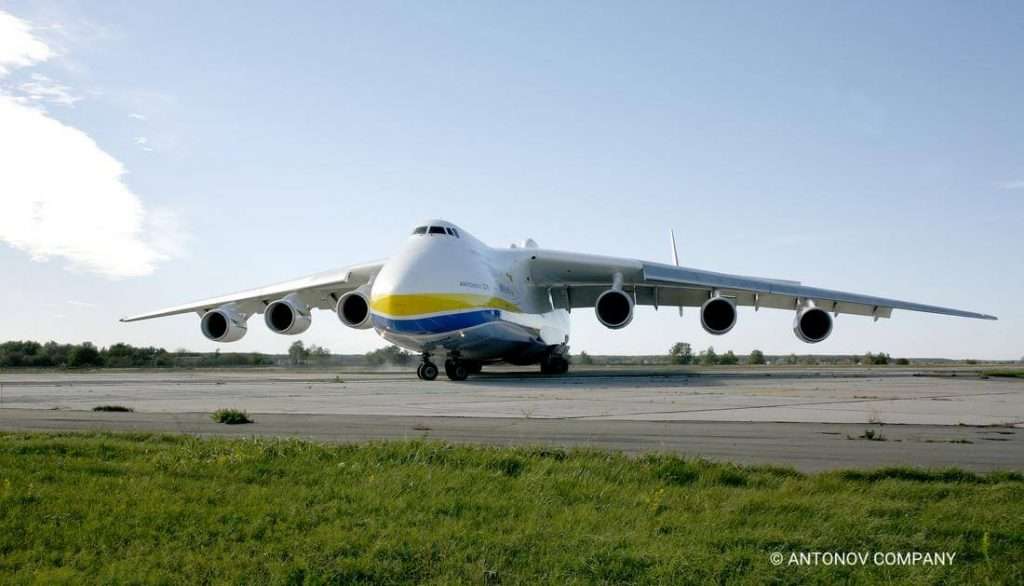
Not The Biggest Aircraft Ever Built!
Yes, you read that right. Since when the news of Mriya’s destruction surfaced, we came across multiple incidents of people calling it the ‘World’s biggest aircraft ever built’. This, unfortunately, is wrong! AN 225 is not the largest aircraft in history. It was just the aircraft with the largest wingspan that continued to be operational till a few weeks back! Aviation history has had bigger planes built in the past. Those were all discarded or not used more than once, adorning the AN 225 with the title of ‘world’s largest operational airplane’. Mriya however, had had its retirement scheduled for 2030.
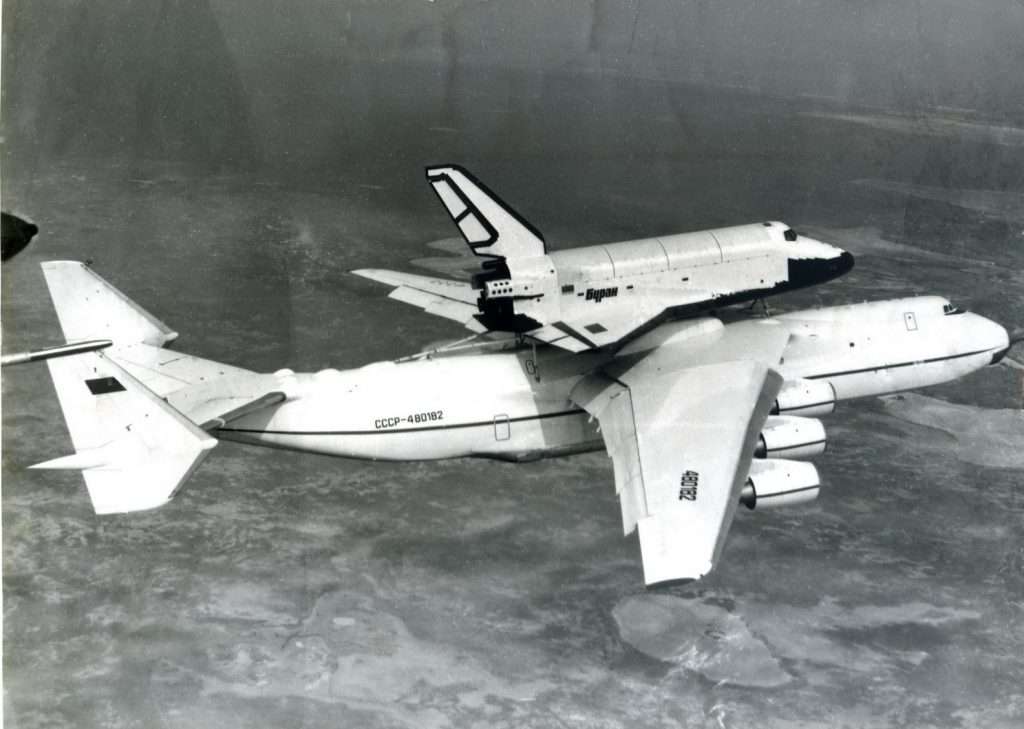
Antonov AN 225 Mriya History
AN225’s heritage dates back to the Cold War era. In the 80s, Soviet Ukraine was in need of an oversized freighter to airlift the Buran orbiters of the Soviet Space Program. Ukraine’s Antonov Design Bureau thus designed the AN 225 as an answer to this and as a replacement for the Myasishchev VM-T. It was developed as an enlargement of the Antonov AN-124 Ruslan by its lead designer Viktor Tolmachev.
ALSO READ: Bell Boeing V-22 Osprey: Can It Fly With Just One Engine?
With the development and manufacturing completed in 1985, Antonov AN-225 had its first flight on December 21, 1988. The airplane was known by the name Antonov AN-225 Mriya (Антонов Ан-225 Мрія in Ukrainian) as Mriya meant ‘Dream’ or ‘inspiration’ in Ukranian. It was no short of a dream with its size and capabilities. It was larger than any other plane of its time and topped the charts with the freight capacity. It could carry 250,000 kilograms internally and up to 200,000 kg atop its fuselage.
Talking of its original mission, aircraft Mriya transported Russia’s Energia rocket’s boosters and the Buran spaceplane after its mission. The Energia launch vehicle had a total weight of 2,400,000 kilograms. Its boosters, however, were strap-on units that weighed significantly less.
More exciting was when Mriya airlifted the Buran spacecraft, after its space flight. Antonov 225 was used to transport the orbiter, from its landing site to the launch complex. The 105,000 kg spaceplane was lifted and mounted on top of Mriya’s fuselage, which then flew to the launch site to drop it back. This role is the same as that of USA’s Shuttle Carrier aircrafts (which by the way, are a pair of heavily modified Boeing 747s).
AN-225 was over the time assigned multiple military missions as well. Known under the NATO reporting name Cossack, it was used to transport military and strategic equipment. The US and Canadian governments hired it to transport military supplies to the Middle East, to support the coalition forces. A recent military mission that had created headlines would be when the plane flew with four main battle tanks aboard, over a closed circuit of 1000 kilometres, in September 2001. The net weight of cargo onboard then was a record 254 tonnes!

Antonov AN-225: More On Its Design…
So, what does it take to build an aircraft this capable? Well, a lot of engineering and days and months of endless toiling. Due to its sheer size and epic freight capacity, the AN-225 differed significantly from other cargo planes. Even though it was based on the AN-124, it had key deviations in design. It had a significantly larger fuselage barrel than the Ruslan and was extensively re-engineered to be efficiently airborne with the epic takeoff weight (around 640,000 kilos!). It had high-mounted anhedral wings (wings with a downward angle to each other), for better manoeuvrability.
Anhedral wings are usually found on fighter jets. But since the AN225 had its massive wings mounted high on the fuselage and above the center of gravity, it would have immense stability when airborne. This would make it difficult for the pilot to manoeuvre the aircraft. However, the sweep-down design of its wings would cut into the stability and make easier steering possible.
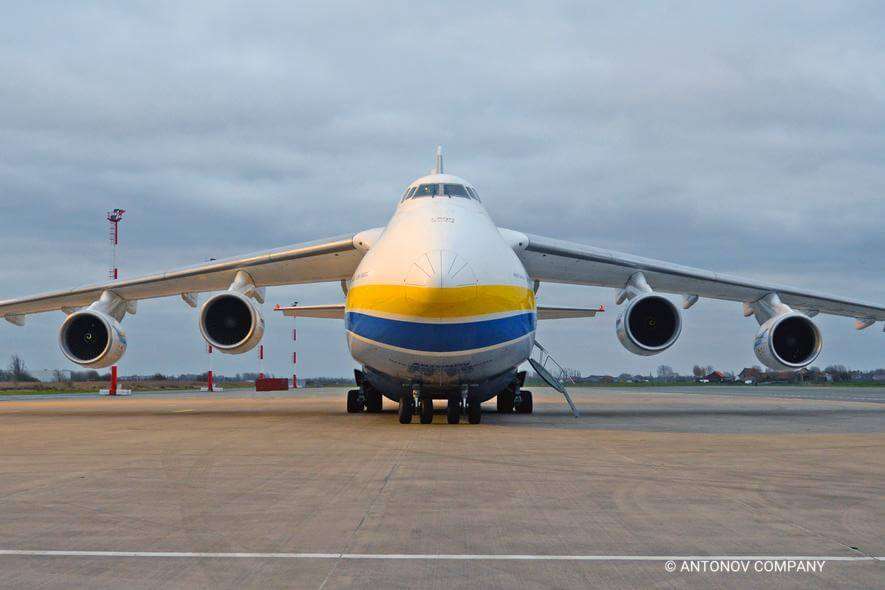
The tail had extensive redesign and reengineering gone into it. Unlike Ruslan, Mriya had twin tails with a much larger horizontal stabilizer that spanned 32.65 meters in overall length. This allowed the aircraft to escape the turbulence caused by externally mounted payloads (such as the spaceplane!), and maintain stability when airborne.
To effectively manage its weight, AN 225 Mriya had a landing gear setup comprising a total of 32 wheels, some of which could be steered. The twin nose gear units ( having two wheels each) could ‘kneel’ to facilitate easier loading and unloading of cargo, as the plane had ditched the usual ‘rear cargo door and ramp’ setup to save weight. The main landing gear consisted of 28 wheels (7 pairs on each side, 4 of which were steerable). AN-225 had the same redundant fly-by-wire APU from the Ruslan but with few software parameters. It was thus a beautiful blend of traditional design and modern technology.
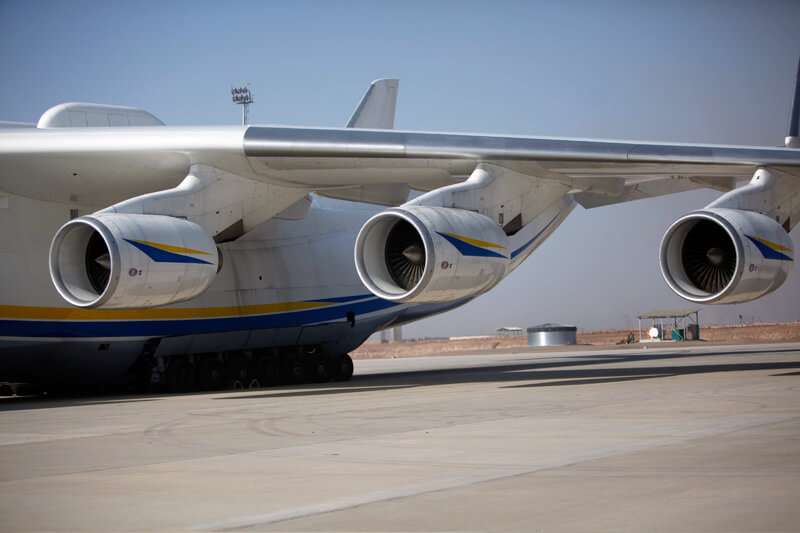
Engine And Other Powertrain Details
Mriya’s wings were massive, with an overall wingspan of 88.4 meters, and together, housed a total of six engines! These were all Ivchenko Progress D-18T high-bypass turbofan units ( air-breathing jet engines on a more familiar note!) Each of these predominantly Ukrainian fanjets could produce 51,500 lbf of thrust, giving the plane a combined take-off thrust of around 309,000 lbf, enough for it to get airborne with super-heavy cargos and achieve high airspeeds. D-18Ts are loved for their high takeoff thrust, low fuel consumption, and high reliability. These also offer long-term service life. This article would give you deeper insights into these engines.

How Many Antonov AN-225 Mriya Are There? Just One!
Yes! The Antonov 225 was a one-off airplane. Just a single unit of this freighter has ever been made. It was thus the exclusive, extravagant piece of pride for Ukraine and its people. Antonov had also been involved in developing a second airframe with a slightly different configuration. However, this project stalled mid-way in 1994, owing to financial crises and a subsequent loss of interest. In 2009, this project had resumed and around 70% of the aircraft was completed before it stopped again.
In 2016, it was again announced to resume for the Aerospace Industry Corporation of China. Two years later, Boeing announced its plans to contribute to the second AN-225. In 2021, Antonov’s CEO was seen seeking investments for resuming the project, further details of which are still unknown. Long story short, the plane that was burnt to ashes in Gostomel was the only piece that had ever had a physical existence.
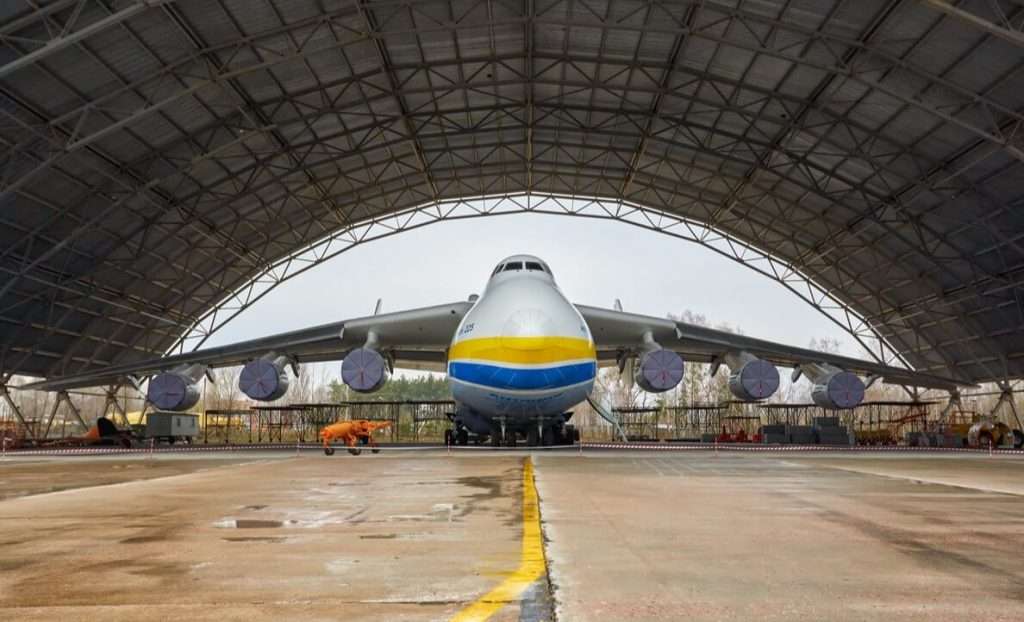
Mriya Broke Its Landing Gear Sensor In 2021!
On January 9, 2021, AN 225 was involved in an incident at Rzeszow airport, when it damaged the landing gear deployment sensor attachment bolts. Luckily, the damage did not affect the aircraft’s landing or safety as such.
Antonov Airlines’ chief pilot later detailed the incident, confirming it to be a lot less dramatic than what the world had thought it to be. He explained that the damage was confined to the two bolts alone and did not affect the sensors much. The issue was soon fixed and the bird was made fit to fly again. The incident, however, had triggered massive buzz on the internet back then.
Key Missions
After its military missions, AN 225 was mothballed for 8 years. The Space mission being called off had made the bird lose its sole purpose and in a way left it open to opportunities. Later in time, Mriya was refurbished and introduced to commercial operations under Antonov Airlines. Its flights were very limited in number, vaguely once or twice a year. But, each one of them had immense significance.
The aircraft was used to transport various pieces of oversized cargo like 150-tonne generators, mining equipment, huge amounts of relief and medical supplies etc between countries. The current livery of the Ukrainian flag colors could be among the most loved colors this bird has ever had. Mriya got these after Antonov Airlines partnered with Volga-Dnep in 2009.
One of Mriya’s most recent missions would be that of transporting 110 tonnes of COVID-19 test kits from China to Austria. This flight took place at a time when the global cargo constraints were severe and pandemic in all its glory. Antonov 225 was put to extensive use in flying medical supplies during the pandemic, owing to its huge freight capacity that had always been loved by the clients.
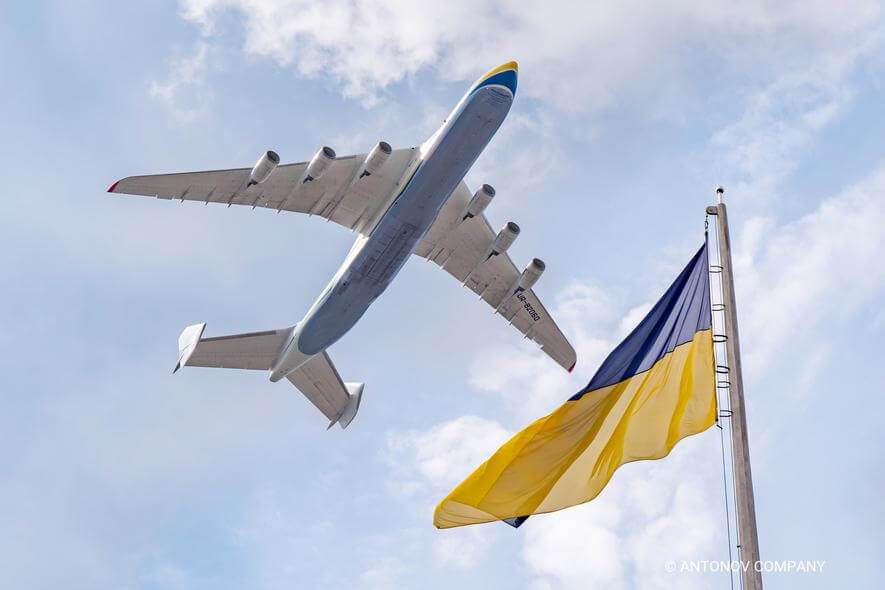
Droolworthy!
For reasons obvious, AN 225 Mriya always gathered eyeballs, whenever it got out of its hangar. The aircraft had a huge fan following around the world. And for the Ukrainians, the love for it could have had a tinge of nationalism in it as well.
The bird was very popular among aircraft spotters. Massive crowds used to gather near the Antonov airport and watch and click Mriya during its take-offs and landings. Many a time, this created much traffic chaos as well. Interestingly similar incidents occurred at the destination airports as well. In May 2016, Mriya’s landing and taxiing at Perth had caused massive traffic jams, when over 15,000 enthusiasts flocked near the airport to get a glimpse of the monster plane. Another instance was in 2020 when 80,000 people followed online the aircraft’s approach to Warsaw Chopin airport. Aviation geeks also had great times whenever Mriya showed up at airshows and she had a habit of doing so!
Is The Spruce Goose Bigger Than AN-225 Mriya?
A question that many aviation geeks have been arguing over for years, let’s try to answer this next, sadly with both planes no more in operation.
To give you the context, Hughes H4 Hercules was a prototype strategic cargo flying boat (fixed-wing seaplane) built in 1947, by America’s Hughes Aircraft Company. It was huge in its dimensions, a quality that not many fixed-wing seaplanes of its time had. It was intended to be developed as a heavy-capacity freighter to be used in World War 2, but was not completed in time, and the project as such was later abandoned.
H4 Hercules was made out of wood, owing to the wartime restrictions on the use of Aluminium, and thus had an empty weight of 1,13,398 kilograms! That was indeed a lot of weight for an aircraft of its time, or at least more than enough for its critics to raise their brows. The plane, made almost entirely of Birch, was often called ‘Spruce Goose’ and ‘Flying Lumberyard’.
Going by dimensions, H4 Hercules was massive. It was in fact, the largest flying boat ever built and with its 97.82 meters wingspan, was also ‘the aircraft with the largest wingspan ever built’, till recently when Scaled Composites Stratolaunch with its 117m wingspan, was airborne for the first time.
Since it was never completed in time for war use, H4 Hercules had lost its sole role. The prototype, however, was made airborne for one single time, on November 2, 1947. With a total of 36 onboard, including 7 invited guests, H4 Hercules took off from Long Beach, California, and remained airborne for around 26 seconds, at an altitude of 70ft and at a speed of 217 km/h. It was experiencing ground effect even at that point.
However, all those never mattered, as the flying boat never flew again! It was kept and maintained in flying condition at a climate-controlled hangar for a long time and later moved to various museums as an exhibit. As of today, the Spruce Goose is an exhibit at the Evergreen Aviation and Space Museum, McMinnville. And this is why we called the AN-225 ‘World’s biggest operational aircraft’ earlier in this article.

So, how does the Spruce Goose compare to the Antonov 225 in dimensions? It is any bigger than Mriya? Let’s go for an A-B comparison of the duo’s dimensions.
| Variable | Hughes H4 Hercules (Spruce Goose) | AN-225 Mriya |
| Length | 66.65 meters | 84 meters |
| Height | 24.18 meters | 18.1 meters |
| Wingspan | 97.82 meters | 88.4 meters |
| Empty Weight | 113,398 kg | 285,000 kg |
Evidently, the Spruce Goose is taller than AN-225 and has a significantly larger wingspan as well. It, however, is around 20% (roughly 17.35 meters) shorter than the Ukrainian monster plane in overall length. Going by the empty weights, the difference is huge with a clear upper hand for the Antonov. Mriya weighs more than double of what the Spruce Goose does, and keeps the title of ‘the heaviest airplane’ safe to itself!
Easter Egg: Dreams Never Die, AN-225 Will Be Rebuilt!
Ukraine’s confirmation of Mriya being destroyed had raised waves of commotion among the aviation geeks. It was equally triggering for the Ukrainians as they had just lost a piece of their national identity and history. And people like me, who have admired the AN-225 as both a bird and a piece of history, might have been the worst-hit…
However, Ukraine has given out a reassuring announcement to all who are mourning the demise of Mriya. Minister of foreign affairs, Dmytro Kuleba was among the first to hint at a possible rebuild for the plane. Further reports reaffirmed this, suggesting that Antonov Company will rebuild AN 225, possibly to higher specifications.
The restoration would be both expensive and time-consuming. The entire process is expected to cost around 3 billion USD and take at least 5 years for completion. Efforts would reportedly be made to make Russia cover the restoration expenses, as and when things ease up between the two.
A recent statement from Yuriy Husyev, General Director of Ukroboronprom, throws more light into what’s up ahead. It said “We will fight for our land and our home until we win. And after the victory, we will definitely finish our new “Mriya”, which has been waiting for this in a safe place for many years. Everything will be Ukraine!”. Going by these, it could be the second airframe, the development of which had earlier stalled, that would be brought to completion, as the replacement for the one that’s been destroyed. Rumors also suggest that the new Mriya would have better capabilities than the previous one.
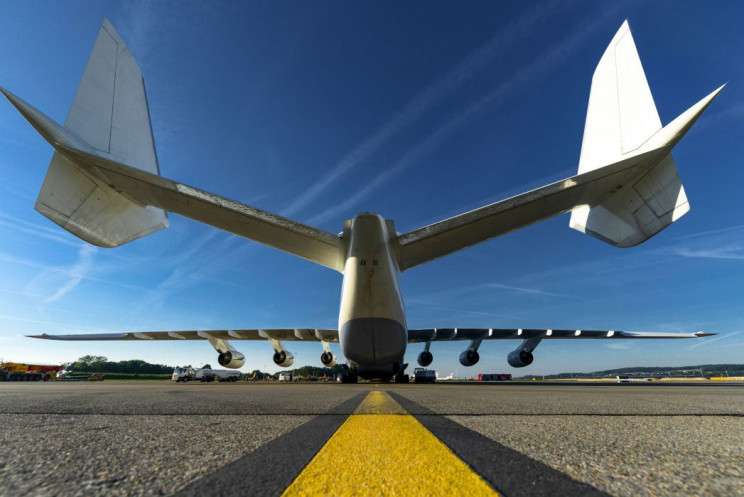
Wrecking a monster plane might curb the aviation capabilities of a nation, but definitely not the aspirations of its people for a free democratic European state or their inner sense of belonging as such. May the ‘Mriya’ of both aviation and of freedom, be reborn and realised…
Read more Aviation stories from us
Image Source: Antonov Newsroom, Antonov Company, Wikipedia, Social media
(Vroom Head does not own copyrights of any of the photographs used. All credits to the respective photographers. Please write to neeraj@vroomhead.com in case of copyright concerns.)


